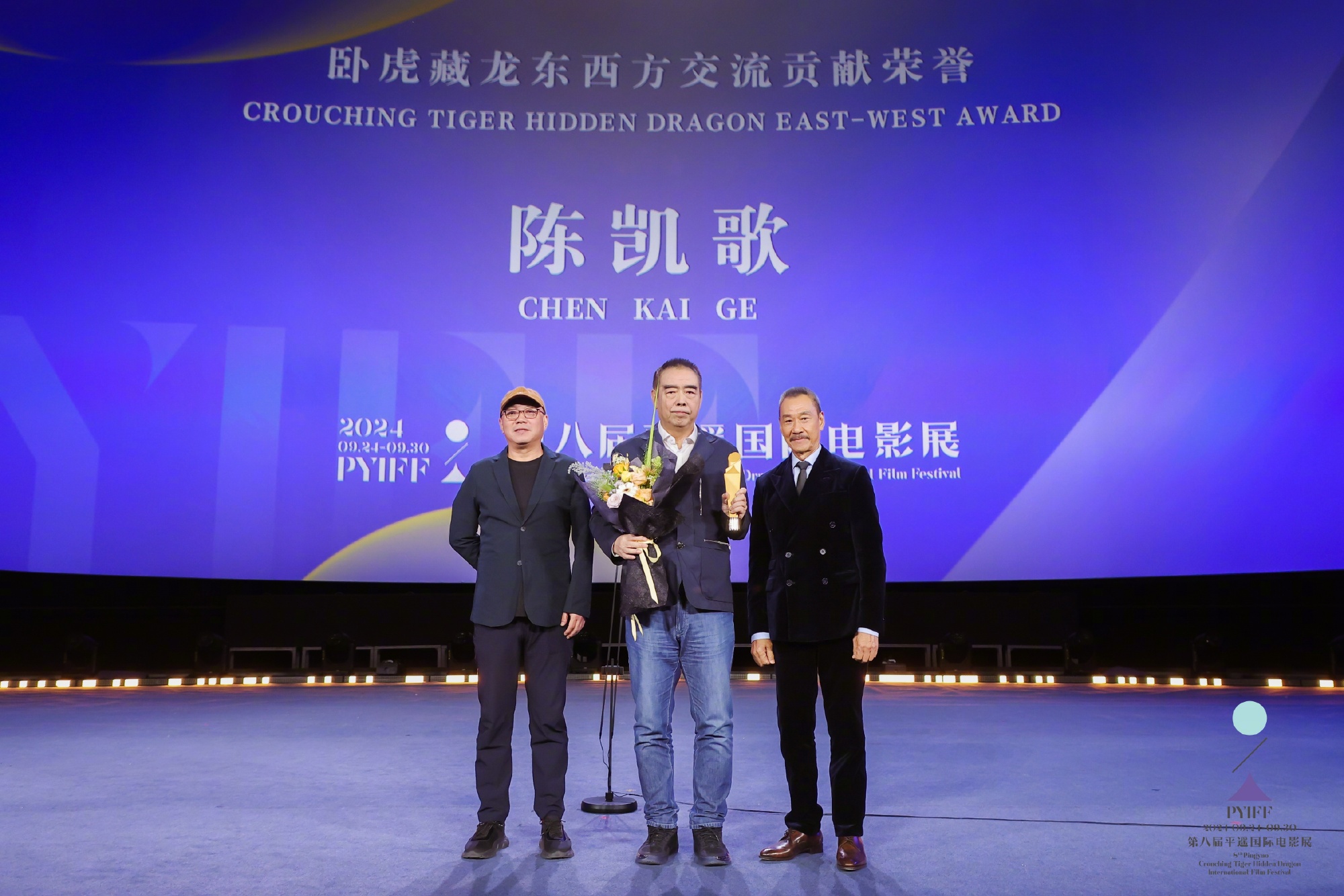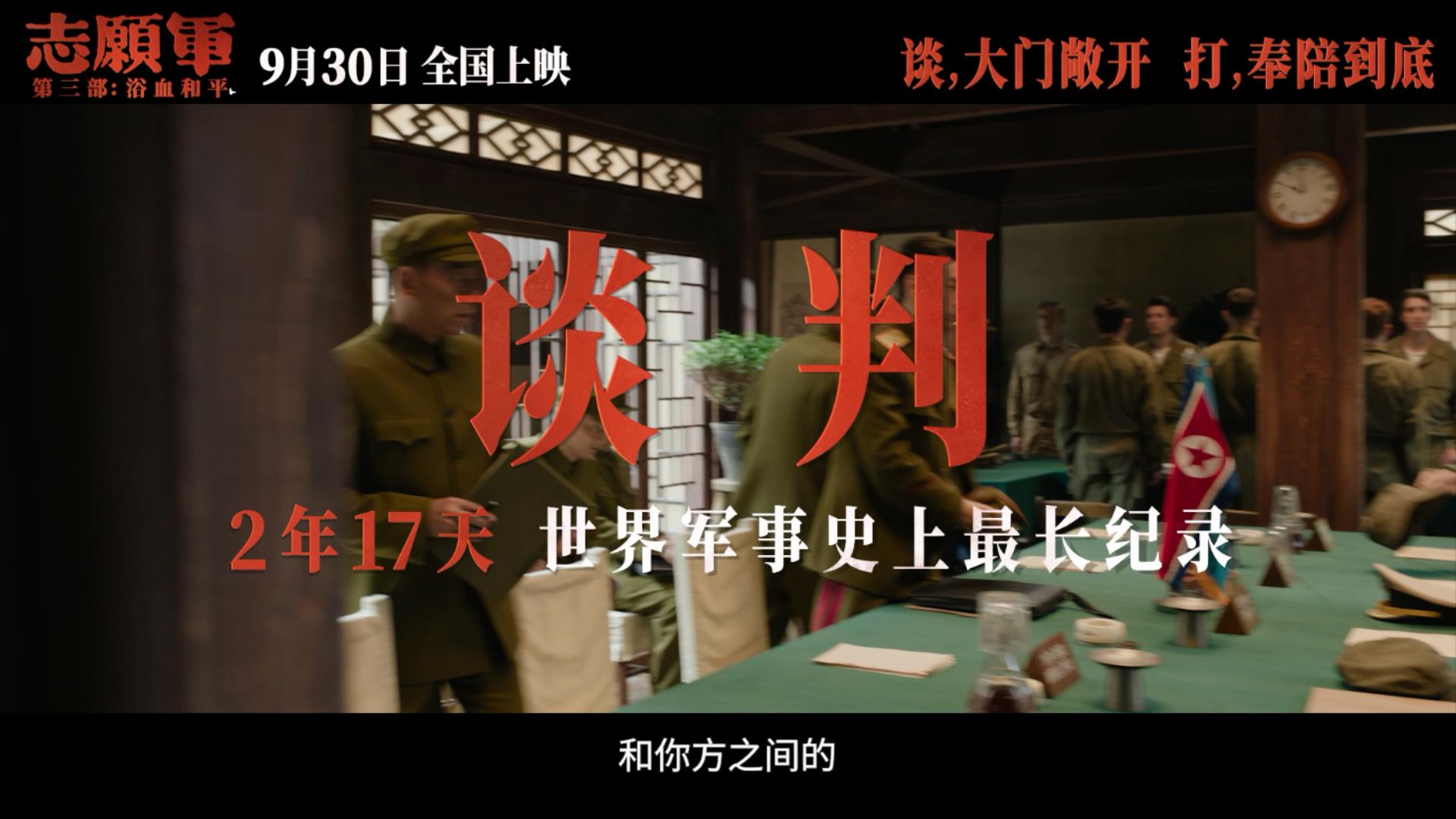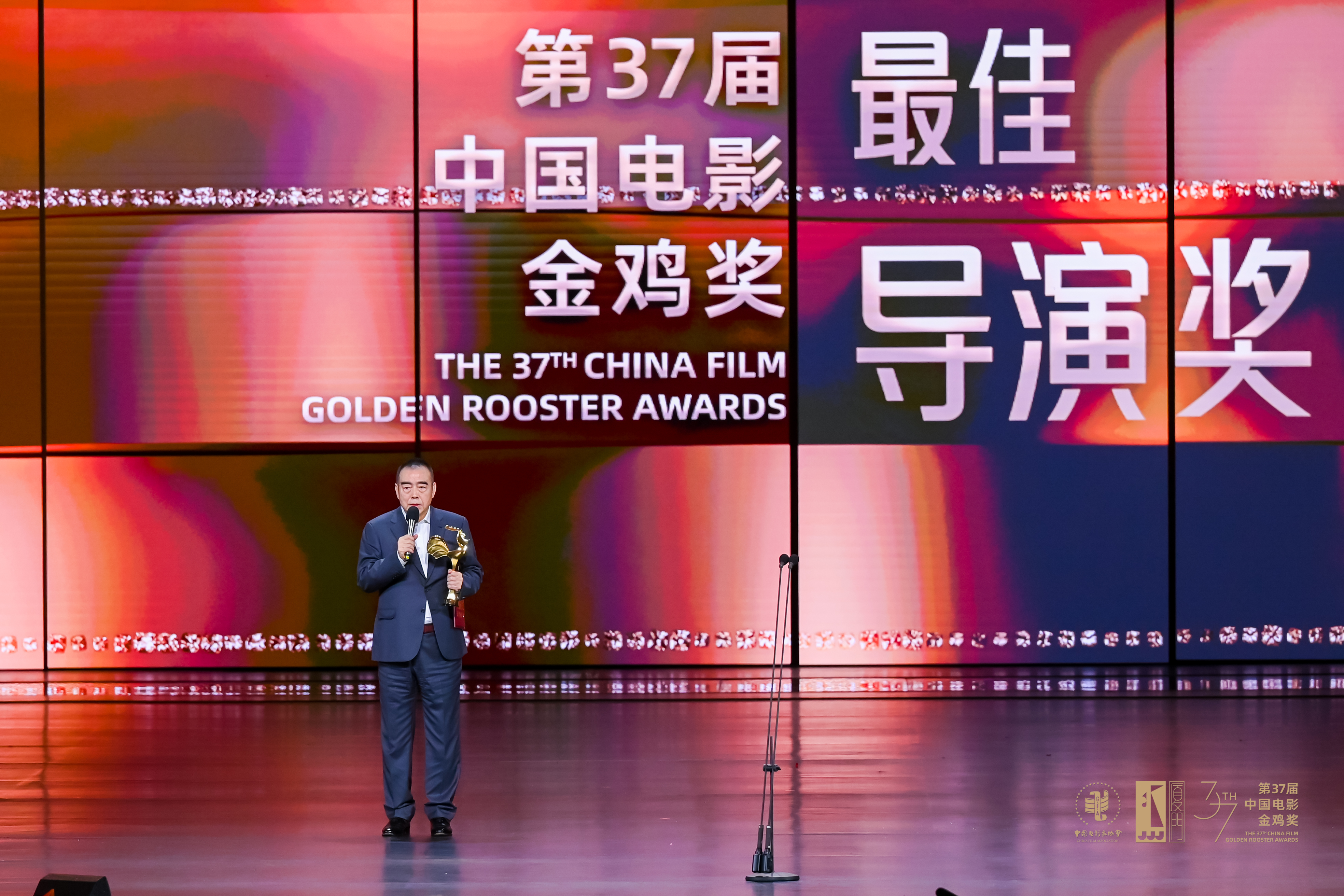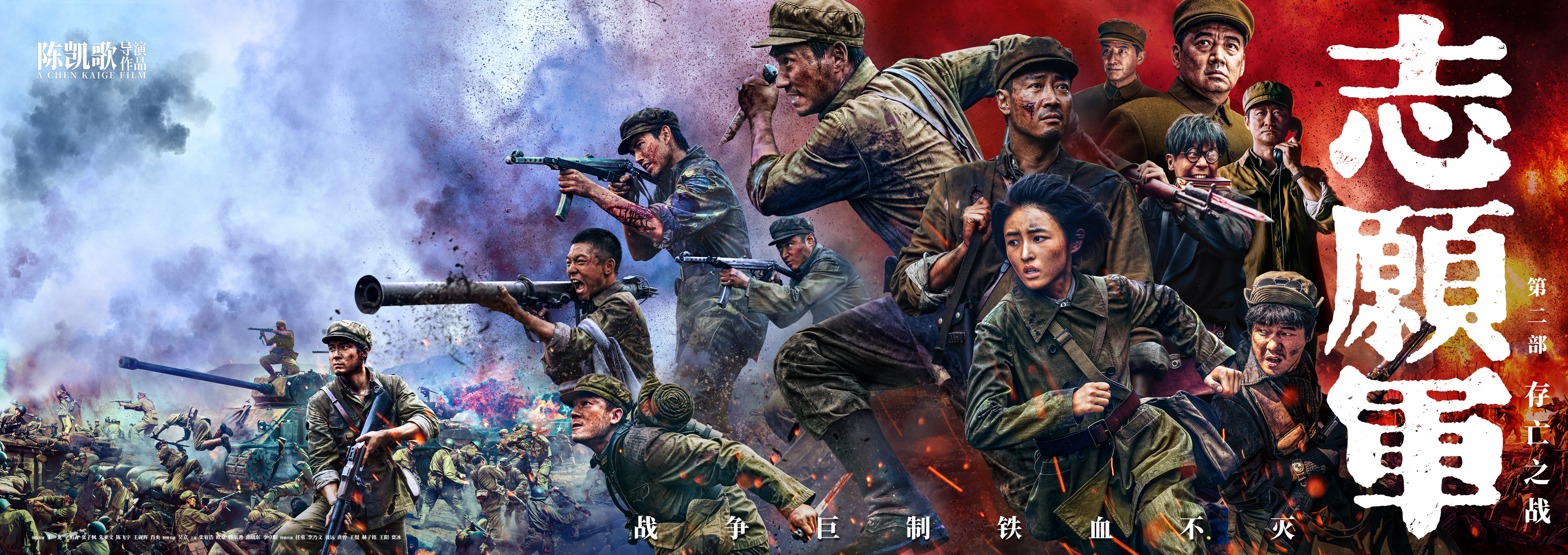
“In June, the ice on the Yellow River does not melt; twisting towards marriage, it's a grand affair for me. Among the grains, the roundness of peas cannot be counted; among people, the pity for daughters is unmatched…” Many film fans may not know that the author of these lyrics from the Xintianyou is director Chen Kaige. It was in his 32nd year when he first set foot on the loess soil of Shaanbei.
Forty years ago, Chen Kaige's film The Yellow Earth emerged like a comet, becoming a milestone in the history of Chinese cinema. With its unique visual style and profound thematic content, it made a tremendous impact on the world and opened new avenues for the development of Chinese film.
On September 24, at the opening ceremony of the eighth Pingyao International Film Festival, singer Wei Wei once again performed the “Daughters' Song” from the film. When Chen Kaige received the “Crouching Tiger, Hidden Dragon East-West Cultural Exchange Contribution Honor”, he took to the stage and reflected, “Time passes so quickly.” That evening, a restored version of The Yellow Earth was specially screened at the Pingyao Film Palace, where director Chen Kaige, lead actor Wang Xueqi, and director Jia Zhangke engaged in a dialogue titled “Loess and Poetry.”

Event scene
What is being nurtured in this land?
In 1984, Chen Kaige traveled to Shaanbei for the first time to scout locations for The Yellow Earth. The unfamiliar landscape and the chilling northern wind, “I saw a solitary tree on the distant hillside, without a trace of human presence, yet there was a footpath trampled down leading directly to that tree. The land was vast, and the sound of the Yellow River was faint and tranquil, perhaps because of the silt. During the day, it was hard to hear its voice. Among the ravines, a shepherd would sing a few lines of Xintianyou—very sorrowful, yet it also brought a sense of joy,” Chen Kaige recalled, admitting he couldn't clearly articulate his feelings about the scenery at the time but had the vague sensation that “the land, people, Yellow River, roads, and this solitary tree were all nurturing something significant on the plateau.”
These images left a deep impression on him and became a source of inspiration for his creative process. The film was adapted from Ke Lan's literary work The Echoes in the Deep Valley, which Chen later renamed The Yellow Earth.

The Yellow Earth poster
Chen Kaige reminisced about the filming process, recalling vividly the details. He noted the intimidating inscription on a stone tablet reading “Civil officials get off their sedan chairs here; military officials dismount here,” and remembered how different the Yellow River appeared from its legendary ferocity; its calmness and vastness provided a profound stimulus. Moreover, the impoverished yet vibrantly alive people on that land left an indelible impression on the creators.

Behind-the-scenes photo from The Yellow Earth, director Chen Kaige with cinematographer Zhang Yimou
During production, the crew faced many difficulties. Material resources were scarce, and the filming conditions were tough. The crew had only two vehicles; one was given to the cinematographer, and all crew members, including Chen Kaige and Wang Xueqi, squeezed into the other. Wang Xueqi revealed that it was his first encounter with filmmaking, and one scene shot on the mountaintop was particularly grueling: “The spot on the mountaintop was utterly unsteady; wearing a revolutionary uniform and drenched in sweat, it was just not a place for human beings. The wind would make me feel queasy. At that moment, I thought I would never make another film; it was too exhausting. I preferred performing in a play instead.” However, when he saw Chen Kaige shaking hands with everyone and saying, “Thank you for the first take,” he regained motivation, thinking, “This feels honorable, and I’m inspired to continue.”
At that time, film stock was extremely precious, so Chen Kaige treasured every shot, asking Wang Xueqi to help measure the duration of each scene. Wang used a stopwatch to measure how long it took to carry water from the entrance to the water tank, converting seconds into feet and noting the duration for each shot. “We calculated how many feet the total footage of all the shots would be, then determined how many times each shot could be filmed. Exceeding the limit would be considered overspending.”

Chen Kaige
A Groundbreaking Era of Information
To understand and review the significance and artistic value of The Yellow Earth, it's essential to place it within the unique historical context of its time. “When we look back at that era, it seems quite magical. After a long period of cultural and communicative isolation, why could films suddenly be made in such a revolutionary way?” Jia Zhangke posed this question to Chen Kaige.
Chen Kaige responded that in the 1980s, film academies provided students with a beneficial knowledge base, “At that time, we held a belief; as students, we desperately wanted to make breakthroughs and innovate.” Additionally, due to the historical circumstances of that period, teaching was interrupted for nearly ten years, resulting in a more open and free academic environment. “The directing department held discussions that lasted entire afternoons, where everyone actively shared their thoughts, perspectives, and feelings. This created a very good learning atmosphere.”
At the same time, he discussed the notion of modern consciousness and poetry, describing it as something difficult to articulate, akin to love—something that can be encountered but not sought after deliberately. Regarding choices in film language, Chen Kaige could not provide a standard answer, but he emphasized, “We must ensure that our inner selves are free and imaginative. Those painful, wandering moments when we struggle with ourselves are what can give a film its uniqueness.”

Still from The Yellow Earth
Jia Zhangke described The Yellow Earth as "the founding work of a milestone in Chinese cinema." As Jia recalled, “For the external world at that time, The Yellow Earth was astonishing, allowing us to see modern Chinese cinema. Before this, the modernization of the cinematic language or consciousness in China was neither sharp nor groundbreaking. It was during the early reform and opening period that a film emerged from inland China, featuring such a fresh cinematic language, shocking not only the Chinese film industry and critics but also the world.” Jia even mentioned that it was after watching The Yellow Earth that he found clarity in his creative path.

Jia Zhangke, Chen Kaige, and Wang Xueqi
Regarding the “astonishing” assessment, Chen Kaige responded that today’s audience may not experience that feeling when watching the film. “Every era has its own tasks. In the 1980s, during the initial stage of reform and opening, the meanings and implications conveyed through the film were received by people of that time.”
The film was completed and achieved tremendous success. Chen Kaige finally understood the premonition he felt when faced with the unfamiliar landscape. “Upon completing this film, the wave of reform and opening that changed China's fate swept across the country, including the Shaanbei where we filmed. This movie seemed to convey some vague information—that our country and our people were yearning for change. The film appeared to reveal certain messages that were received by our audience, critics, and filmmakers. This work received many accolades, though I understood it was far from a fully mature piece. The power demonstrated in this film is not just that of the rain-seeker but also reflected in the boys who go against the current; history is always full of collisions.”
Forty years have passed, and the audience in front of the screen has changed many times over, yet the land depicted on screen continues to narrate the soul-stirring stories of the Chinese people. At the event, Chen Kaige expressed, “I feel honored to have directed The Yellow Earth at the age of 32, and I’m grateful that Pingyao still remembers this film.”


